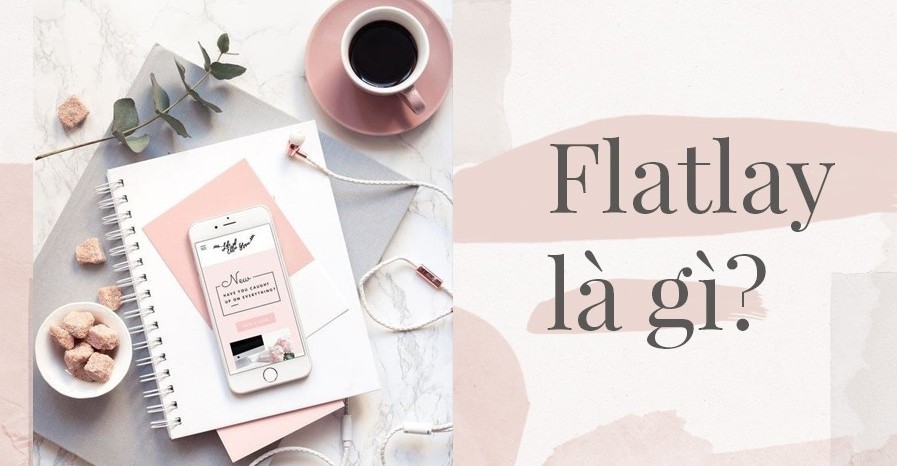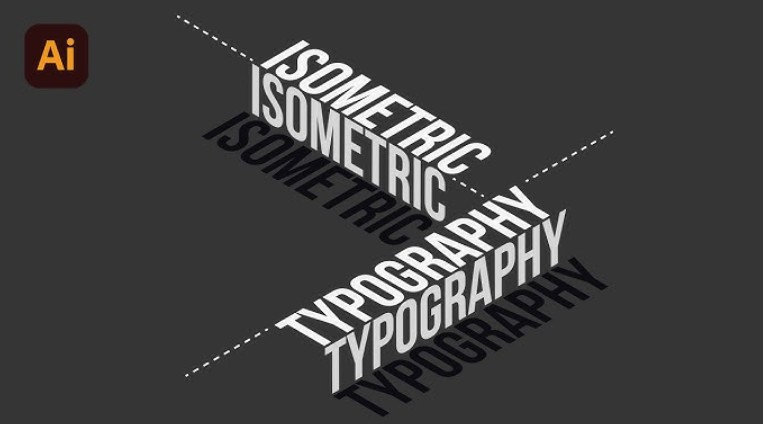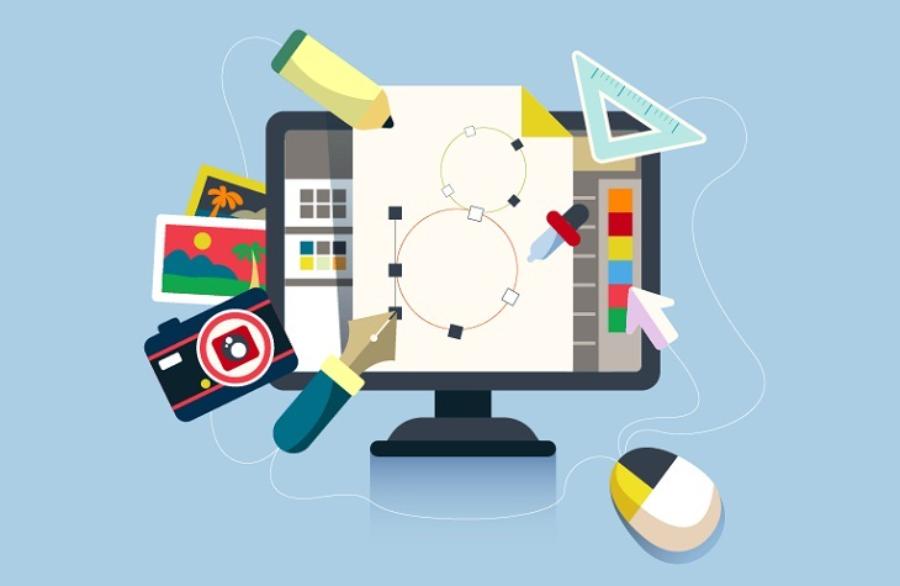Best Selling Products
New to Flatlay Photography? Read These 'Saving' Tips
Nội dung
- 1. What is Flatlay and why shouldn't you ignore this style?
- 2. Elements that make an impressive Flatlay photo
- 3. Experience in effective Flatlay photography
- 4. Common mistakes when shooting Flatlay and how to avoid them
- 4.1. Messy layout
- 4.2. Uneven lighting
- 4.3. Color mismatch
- 4.4. Background is too prominent
- 4.5. Not cleaning the object thoroughly
- 4.6. Not checking the frame carefully before and after taking the photo
Confidently shoot Flatlay at home with these easy-to-apply tips from SaDesign – for both beginners and professional designers.

In the increasingly developing visual world, images have become an extremely powerful communication tool. Especially in the field of design, product promotion or social media, images not only need to be beautiful but also need to convey emotions, messages and professionalism. One of the most popular photography styles today is Flatlay photography . Flatlay is not simply arranging objects on a flat surface and then shooting from above. It is art through composition, light, color and arrangement. In this article, SaDesign will reveal to you the "valuable" experiences in Flatlay photography to help you easily create photos that are not only beautiful but also "eye-catching" to viewers.
1. What is Flatlay and why shouldn't you ignore this style?
Flatlay is a style of photography from above, with objects arranged on a flat surface such as a wooden table, fabric, paper background... to create an attractive composition. The characteristics of Flatlay photos are neatness, sophistication and storytelling - viewers not only see the product, but also "feel" the atmosphere, lifestyle or message you want to convey.
Flatlay is currently widely used in:
Advertising design – packaging
Content for social networks (Instagram, Pinterest…)
Product photos of cosmetics, fashion, food
Creative products such as books, stationery, DIY accessories…
.png)
If you're looking to enhance the visual quality of your brand, portfolio, or products, mastering Flatlay is an indispensable skill.
2. Elements that make an impressive Flatlay photo
Before you start setting up or shooting, you need to understand the core elements that determine the quality of a Flatlay photo. This is the foundation that helps you master every concept from simple to complex.
Top-down view
The key to a flatlay is to shoot perpendicular to the plane. This helps to keep the objects in the photo sharp and clear, creating a neat and professional composition. Using a tripod or a tripod stand is a simple but effective trick to maintain stability when shooting.
Light – The Vital Element
Flatlays are very sensitive to light. Soft natural light (like morning or afternoon window light) will help to show details clearly without harsh shadows. If the lighting conditions are not ideal, you can use softboxes, ring lights or reflectors to help.
.png)
Harmonious colors – Highlight the main subject
An effective flatlay always has a consistent color scheme. Depending on the concept, you can choose soft pastel tones, luxurious dark tones or bold colors to create contrast. However, don’t let the secondary colors overwhelm the main object – always ask yourself: “Does this color support or detract from the main message?”
Balanced Layout – Has Highlights and Breathing Space
Flatlays should not be too busy. Proper placement helps viewers focus on the main content. Apply the rule of thirds, symmetry or intentional asymmetry, and keep some “breathing” space to create an airy feel.
3. Experience in effective Flatlay photography
Find the right plane
With the nature of taking photos and constructing the layout based on real samples, not Photoshop, the overall Flatlay is quite elaborate. Therefore, in order to highlight the subject, the "main character" of the photo shoot, finding the right flat surface is extremely important. The simpler this flat surface is, with less elaborate and complicated colors, the more impressive the photo will be. Accordingly, sometimes simple flat surfaces such as wooden surfaces, table tops, mattresses, cotton carpets, etc. are used to highlight the subject of the Flatlay photo shoot to the maximum.
.png)
Make the most of natural light
Natural light is an important factor that helps every photo become attractive and impressive. They are effective and create much better effects than using artificial light, using Apps, or editing software. Therefore, if there is a natural light source, make the most of it. On the contrary, if the light source is not enough or does not help achieve the purpose of taking Flatlay photos, use artificial light sources. However, adjust them so that they are as natural as possible.
Determine the shooting angle
The nature of Flatlay is to arrange many different objects and accessories in the Concept of photography. Therefore, determining the shooting angle is an extremely important factor. That is because if you choose the wrong shooting angle, the main subject will immediately turn into an accessory and vice versa, the accessory will naturally take the center position. Along with that, do not forget to align the shooting angle so that the image is sharp and reflects the original purpose.
Arrange the shooting object
Arranging the subject is arguably the most important element in Flatlay photography. It not only makes the photo attractive and impressive, but also helps you express hidden meanings and artistic accents. Therefore, do not hesitate to break the rules to create a difference.
Create depth, perspective and natural shadows
Creating depth, distance and natural shadows makes the work more impressive and profound than just taking a real photo of the object. The effectiveness of taking natural shadows is closely related to alignment and capturing natural light, so you need to pay attention to perform best in practice.
.png)
Pay attention to layout and spacing
Many objects and accessories can help make the photo more vivid and impressive, but sometimes make it difficult for viewers to distinguish which is the important element that the photographer wants to aim for. And to help viewers, the photographer needs to come up with ideas and arrange everything perfectly and link together to highlight the main subject in the Concept.
Create more white space
White space is the empty space between objects in Flatlay photography. This is an important factor to help your image be balanced and not create a confusing feeling for the viewer. Therefore, do not just focus on the subjects and forget about white space in Flatlay photography.
Reasonable color coordination
What is a reasonable color scheme? This is a difficult question to answer because each person will have a different perspective on color scheme. And Flatlay photography is no exception, each person will have their own opinions and perspectives on color scheme. Accordingly, you can completely mix colors as you like, but do not ignore important basic principles such as contrast, color compatibility, etc.
4. Common mistakes when shooting Flatlay and how to avoid them
4.1. Messy layout
One of the most common mistakes when shooting flatlay is to go overboard with details, trying to cram too many objects into the frame. This makes the photo confusing, without a clear focal point, and visually overloads the viewer.
.png)
How to fix:
Focus on one main subject. Choose 1-2 main objects to center the story.
Keep adequate white space. Breathing space between objects helps keep the overall image clear and easy to read.
Apply basic composition principles like the rule of thirds, triangle composition or central symmetry to arrange objects properly.
4.2. Uneven lighting
Lighting is the most important element in Flatlay, and uneven lighting is an easy mistake to make. When there are too many uncontrolled light sources, the image will have uneven light and dark areas, causing harsh shadows or local “blowing”. The result is an unnatural, unbalanced image.
How to fix:
Prioritize natural light from windows, especially in the morning or afternoon – when the light is soft and easy to adjust.
Use a reflector to soften shadows and distribute light evenly across the surface.
If shooting in a closed room, use softboxes or dimmable ring lights – avoid yellow lights or mixed lighting that creates a color cast.
4.3. Color mismatch
Colors in a flatlay should not only look good, but also be visually connected. When colors in an image don’t match – for example, a pastel tone paired with a bright neon object – it creates an overall imbalance, which takes away from the subtlety and emotion of the image.
.png)
How to fix:
Determine the main color palette before arranging objects – only use 2–3 main colors, other colors should only appear as accents.
If in doubt, choose neutral tones like white, beige, light brown or gray – very “pleasant” and easy to combine.
Use tools like Adobe Color, Coolors.co to create a suitable color palette before setup.
4.4. Background is too prominent
Some people use backgrounds that are too bright, have large patterns, or are too brightly colored, causing the main subject to be “drowned” in the frame. As a result, viewers don’t know where to focus, or don’t realize what the main product is that needs to be conveyed.
How to fix:
Let the background be the background, not “steal the spotlight”.
If the main object already has a prominent color or many details, choose a neutral background (white, beige, light gray...).
You can use a monochrome background combined with light textures such as linen, wood, and rough paper to add depth while still keeping the subject prominent.
4.5. Not cleaning the object thoroughly
A small speck of dust, a fingerprint, or a piece of paper can be picked up by your camera more clearly than you think. These details make your Flatlay look sloppy, unprofessional, and require time-consuming post-production editing.
.png)
How to fix:
Before taking a photo, wipe the object clean with a soft cloth, especially shiny surfaces such as glass, plastic, mirrors, etc.
Use an old makeup brush or camera brush to lightly dust off.
If there are still excess details after taking a photo, use Photoshop to Clone Stamp or Healing Brush to handle it thoroughly.
4.6. Not checking the frame carefully before and after taking the photo
It’s not uncommon to discover after taking a photo that the composition is off, the subject is hidden, or some “garbage” is in the frame. Not observing carefully before pressing the shutter often leads to unfortunate mistakes, especially when you have set up the scene carefully.
How to fix:
Take a few test shots first, then review them on a large screen (computer, camera, or tablet) to check for composition and minor errors.
After each set, take a few minutes to review the whole scene, making sure all elements (camera angle, lighting, objects, etc.) are okay.
Flatlay is not just a photography technique – it is a way for you to present your aesthetic thinking, tell stories and express your personal identity through images. Whether you are a designer, content creator or online shop owner, mastering Flatlay will help you enhance your image and convey your brand value more effectively. Hopefully, the experiences that SaDesign shares in this article will help you confidently create and create “soulful” Flatlay photos. Don’t hesitate to experiment with many styles, color schemes, and objects to discover your own unique Flatlay formula!












































